Saudi Arabia has offered the first look at evidence it said it had collected after the unprecedented strikes on the Abqaiq oil processing facility and the Khurais oil field this past weekend, which Yemen’s Houthi rebels have claimed responsibility for. Saudi authorities said that missiles and suicide drones employed proved Iran had sponsored the attacks and that the weapons could not have flown to their targets from Yemen, views that the United States shares. However, Riyadh stopped short of blaming any particular party and significant questions remain as to the actual point of origin of the strikes.
Make sure to catch up on the general details about these strikes as they are known in our previous post here and our initial, deeper analysis and commentary on why the attack succeeded, the realities of air defense system capabilities, and the larger issues at play here.
Saudi Arabian Colonel Turki Al Malki, the top spokesman for the Saudi-led coalition fighting the Houthis, presented the remains of multiple missiles and unmanned aircraft during a press briefing Riyadh on Sept. 18, 2019. He also said that the attack on Abqaiq consisted of 18 suicide drones, while the strikes on Khurais involved four cruise missiles. Three more cruise missiles, which appeared to be heading for Abqaiq, reportedly crashed before reaching their target. The attacks on the two locations occurred on the night of Sept. 14-15, 2019.
The attacks came from the north, were “unquestionably sponsored by Iran,” and “did not originate from Yemen despite Iran’s best efforts to make it appear so,” Al Malki said during the press briefing. He further described the incident as “an attack on the global economy,” but did not specifically name the group or groups that Saudi Arabia may believe were responsible or where exactly those individuals launched the weapons in question from.
Al Malki’s full briefing is available below:

The Houthis’ main area of control is in southwestern Yemen, which is roughly 780 miles from Abqaiq and a slightly shorter distance to Khurais. The distance from the extreme northeastern corner of Yemen, where the rebels have had little to no control is around 530 miles from those sites. Abqaiq, specifically, which the Saudis now say was exclusively targeted by unmanned aircraft, is around 330 miles from southern Iraq and southwestern Iran. It’s also just 200 miles or so across the Persian Gulf from Iran.
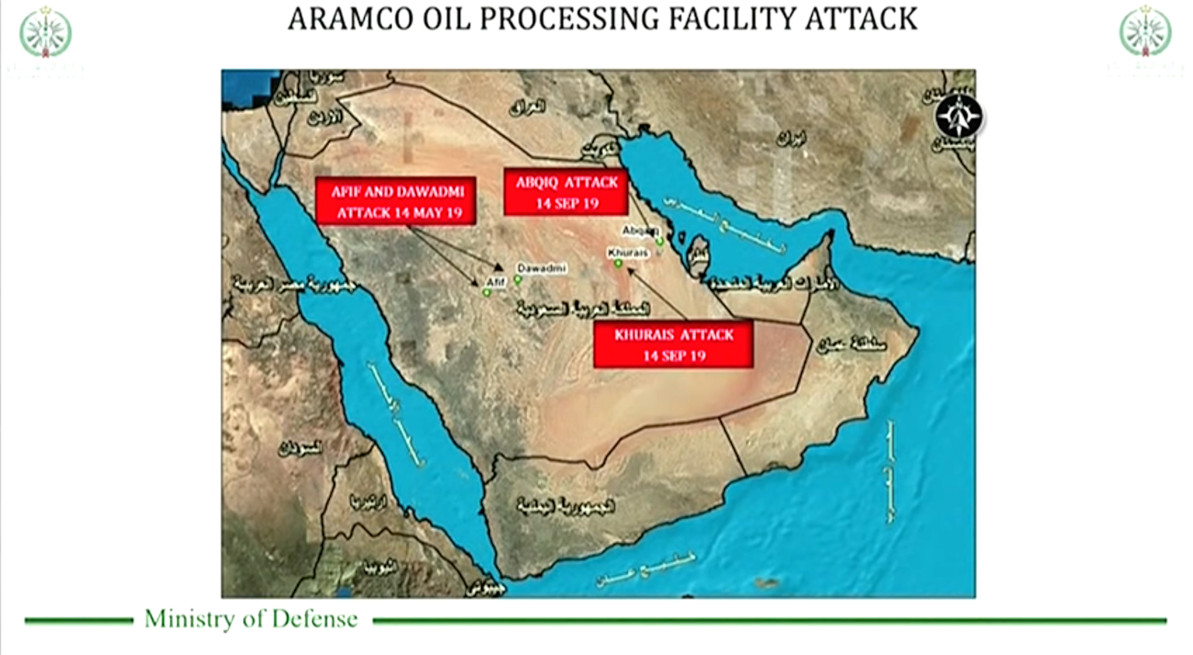
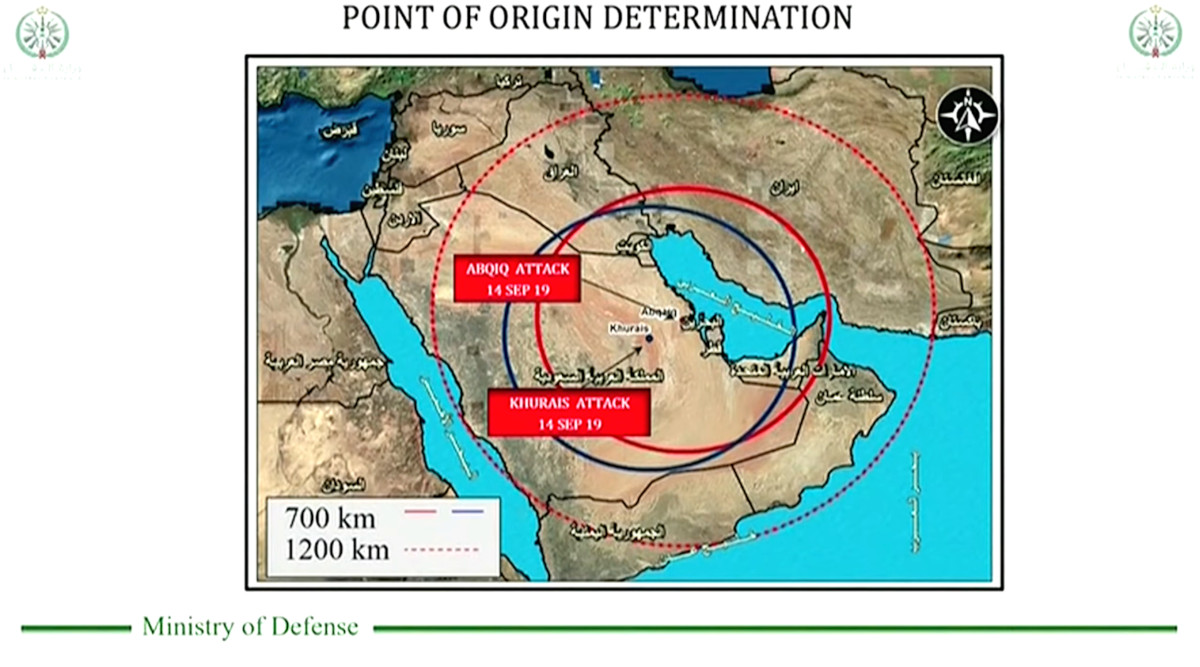
Saudi Arabia described the cruise missiles they recovered pieces of as a variant of Iran’s air-launched Ya Ali, though there is no evidence as yet that aircraft launched the weapons in question. Initial observations showed that these weapons were similar, if not identical to the Quds 1, a missile that the Houthis claimed to have first employed in June 2019 and revealed to the public a month later. That missile is ground-launched.
The exact range of these missiles is unknown, but experts have placed it at around 435 miles based on the limitations of its engine, which appears to be a Czech-made TJ100 turbojet. This would be the same general range as the Ya Ali.
We also don’t know the maximum range of the triangle-shaped suicide drones, which Saudi Arabia has referred to as “delta wings,” but they do appear relatively small. Al Malki’s briefing linked the design to one that appeared in 2014 at an Iranian Islamic Revolutionary Guard Corps (IRGC) exhibition, which has not been seen among the Houthis extensive drone arsenal, at least as of yet.
The Saudi Colonel also showed items related to suicide drone strikes the Houthis claimed responsibility for on oil-related facilities in on Afif and Dawadmi, which occurred in May 2019, saying that the two incidents were directly related. This suggests that the Saudis may be of the belief that these earlier attacks may have originated from the same or similar locations outside of Yemen.
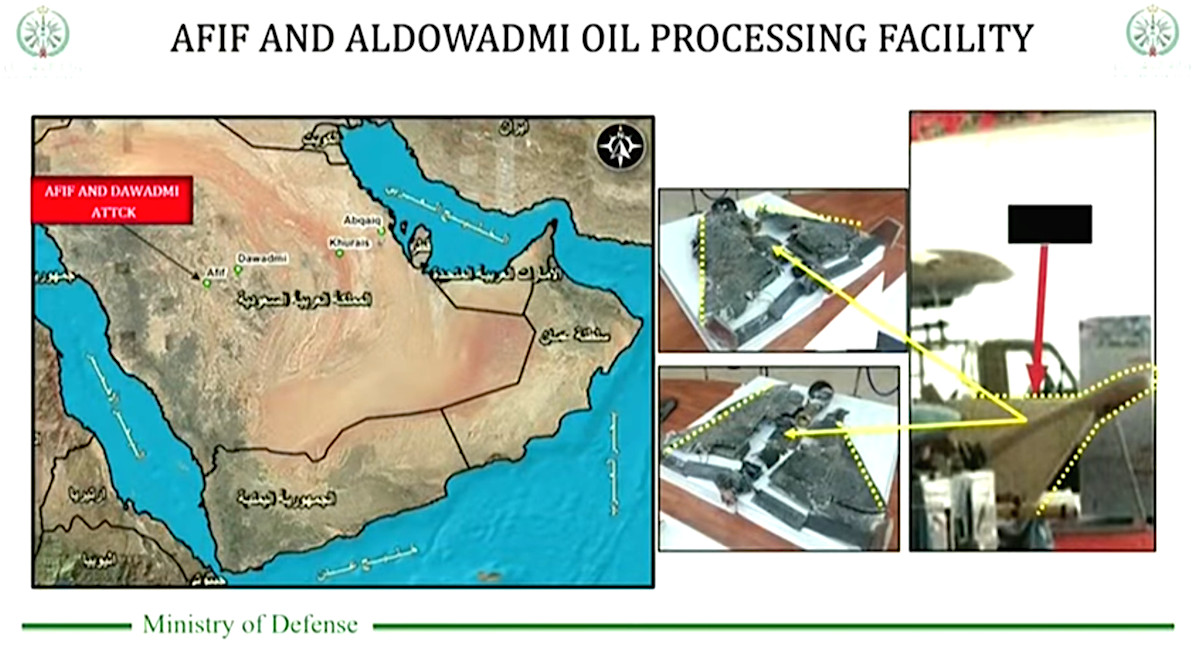
It’s also worth noting that Saudi Arabia has incorrectly identified wreckage from past Houthi attacks and it is possible that we have not yet seen the full extent of the Yemeni rebels’ capabilities, which is at least the result of active Iranian support, if not direct shipments of completed weapons from Iran. After Malki’s press briefing the group made a televised claim to have a new suicide drone, which they called the Qasef 3, with an improved jet engine, implying added range, though there is no proof yet that this unmanned aircraft exists or that it was involved in any previous attacks. United Nations investigators in the past have also noted the rebel’s dubious past claims to have drones, which U.N. reports refer to as UAV-X, that can fly in excess of 900 miles.
The Houthis also claimed they had footage from one of their drones striking the Abqaiq facility to prove they had carried out the attack. However, they appear to have only shown manipulated and dated Google Earth imagery of the site. The rebel group also does not appear to have the beyond-line-of-sight data links that would be necessary to have recorded this footage during the attacks.
The evidence does seem to increasingly be pointing to a launch site somewhere other than Yemen, as well as Iran’s support for whoever carried out the attacks, but it also remains largely circumstantial. Without knowing the exact capabilities of the missiles and suicide drones in question, it is difficult to say conclusively where they came from.
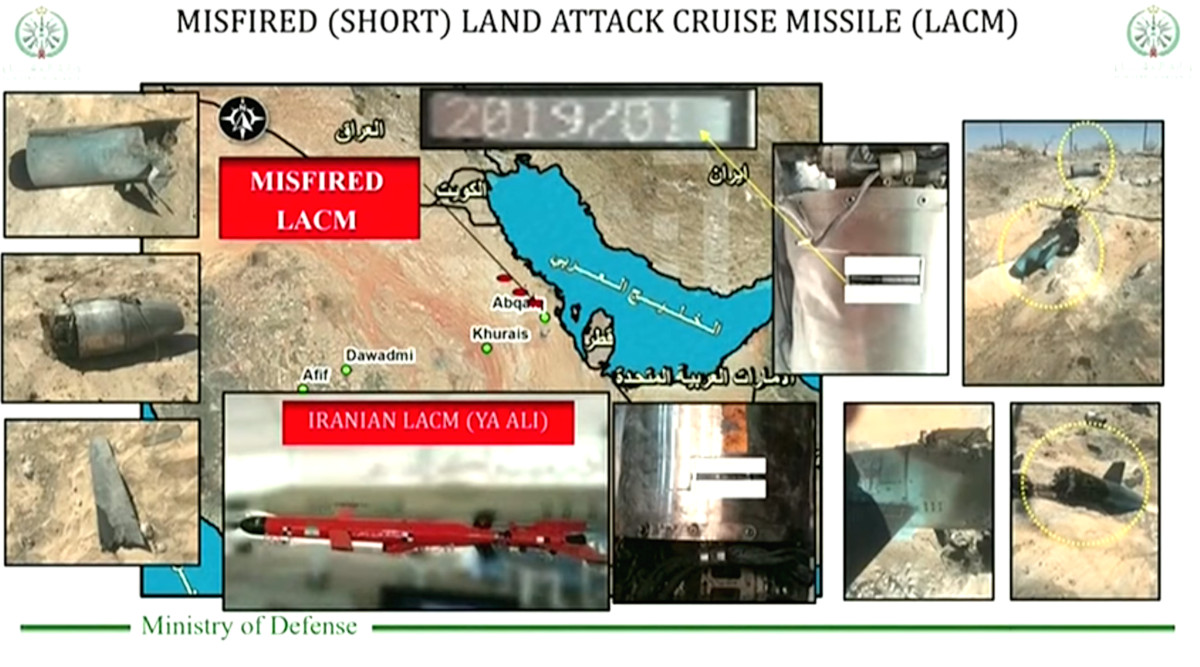
U.S. officials have claimed that the launch sites were inside Iran itself, but other reports have pointed to possible locations in southern Iraq. There is also the possibility that there were multiple, physically separated launch sites, which could potentially include boats in the Persian Gulf.
If the missiles and suicide drones did fly from locations in southwestern Iran, it is also very likely that they would have had to cross over a part of Kuwait in order to reach their targets in Saudi Arabia from the north, as both American and Saudi officials have asserted. This raises questions about how this would have been possible without Kuwaiti authorities being aware. There is unconfirmed video, seen below, purporting to be of missile or drone-like objects flying over Kuwait on the night of Sept. 14, 2019, which the Kuwaiti government is now investigating.

Of course, as we at the War Zone noted in our initial analysis, air defense networks are hardly infallible and detecting low-flying missiles or small unmanned aircraft, and especially large volumes of them, can be particularly challenging. Analysis of satellite imagery shows that Saudi Arabia’s own defenses at Abqaiq are present, but somewhat limited considering it’s the largest facility of its type anywhere in the world, which, before the attacks, was responsible for the production of approximately 10 percent of the world’s oil.
The point defenses partially rely on fairly dated Shahine surface-to-air missile systems—although they were likely upgraded in some manner—a variant of the French Crotale, and arrays of Oerlikon GDF 35mm guns aided by Skyguard fire control radars. There is no indication that whoever launched the attacks even concerned themselves with attempting to destroy those defenses first. Clearly, they were not effective in repelling the attack.
The United States reportedly has radar tracks and other intelligence to support its conclusions about the point of origin of the attacks, though the U.S. government has not yet been able or willing to release that information to the public. An anonymous U.S. official reportedly told CBS News that Iran’s Supreme Leader Ayatollah Ali Khamenei approved the operation, but under the condition that it would be impossible to trace it back to Iran.
Depending on the state of the wreckage, Saudi Arabia or its partners may be able to glean additional details from the guidance systems on the weapons. The Saudis were previously able to trace a Houthi suicide drone boat back to Iran by downloading pulling GPS data from its navigation system. For the moment, the Saudis do appear to be cautiously avoiding direct attribution for the attacks and they have called for an independent United Nations investigation into the incidents. A previous U.N. review of attacks on tankers in the Gulf of Oman earlier this year, which the United States and others have also accused Iran of being involved in, said an unspecified “state actor” was responsible.
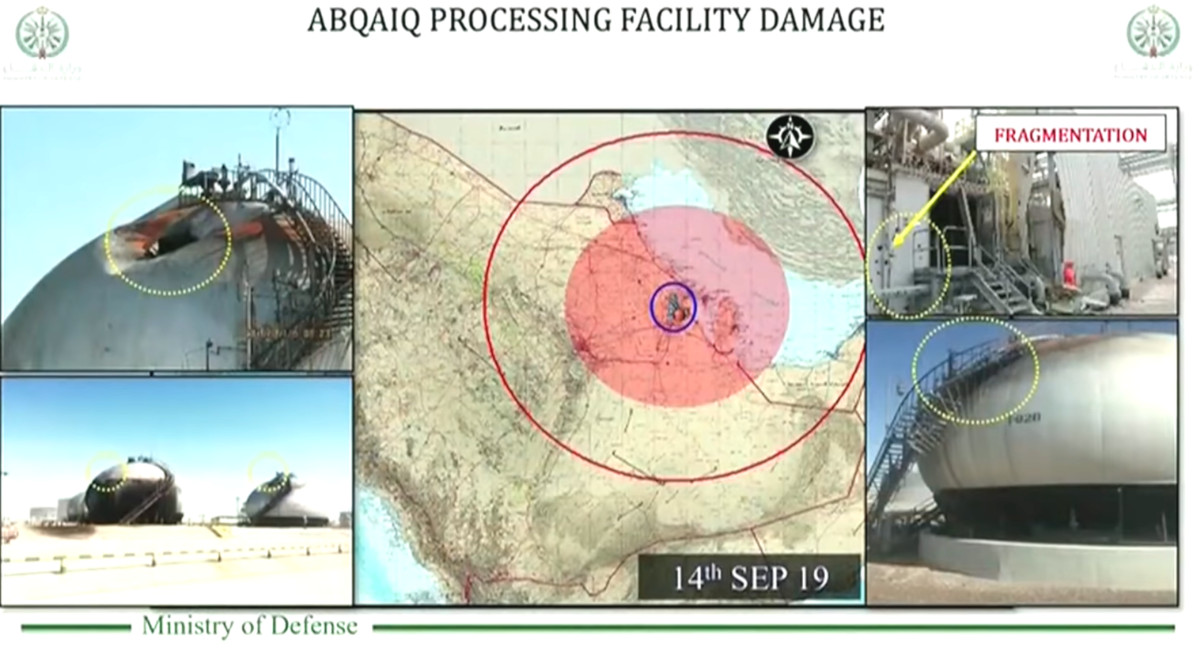
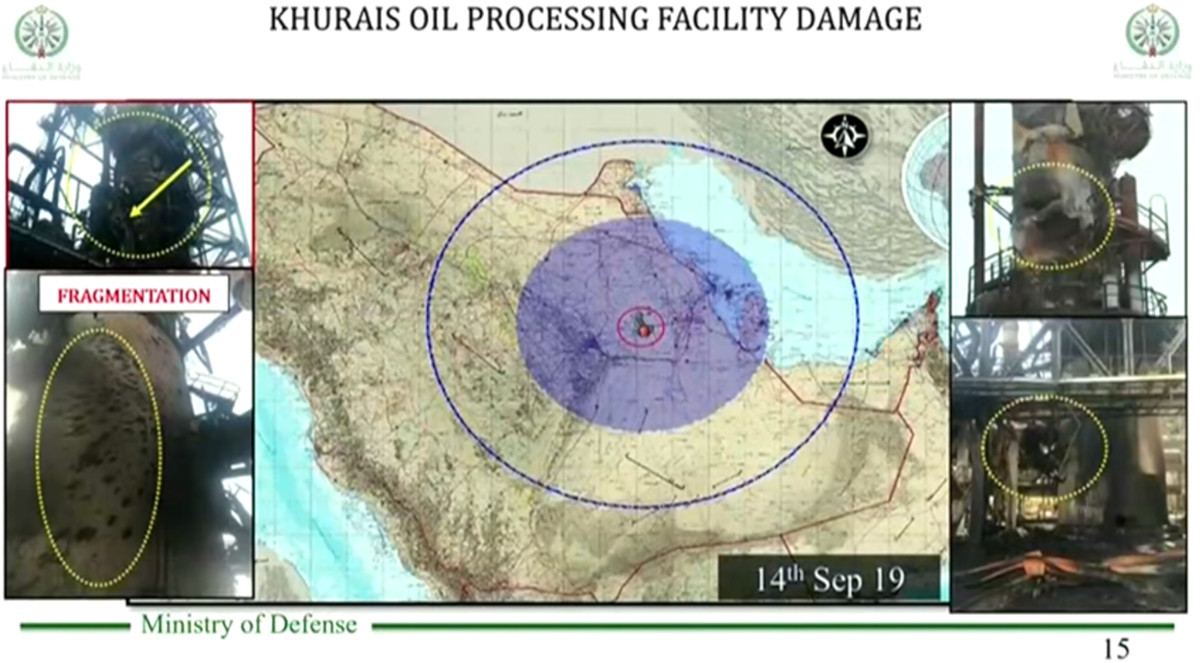
The United States, which had been more open with its accusations, is also reportedly seeking a response from the United Nations Security Council. The Iranians, for their part, continue to deny any involvement whatsoever and have threatened to retaliate if the U.S. military launches strikes against targets within its borders. The Houthis separately issued their own threats, including against the United Arab Emirates, which is curious given that the UAE recently announced the end of its involvement in Saudi-led coalition operations against the Yemeni rebels.
At the same time, U.S. President Donald Trump has said he will look to impose even more sanctions on Iran. Secretary of State Mike Pompeo, who is now in Saudi Arabia, declared the attacks on Abqaiq and Khurais to have been an “act of war.” Lindsey Graham, a Republican Senator from South Carolina, who has been a principle confident of Trump’s in the past year or so, also echoed that same sentiment.

Still, despite some calls for a U.S. military response, there appears to be no consensus within the U.S. government about how to proceed. These divisions have been perhaps most visible in Tweets between Graham and Trump, in which the Senator suggested that the decision not to strike Iran after the IRGC shot down a U.S. Navy drone in June 2019 was a sign of weakness. The President responded angrily and said his decision not to proceed with the retaliatory operation had actually been a show of great strength.
In the meantime, the Pentagon has said it will continue to work to support the defense of Saudi Arabia, as well as providing assistance for the ongoing investigation into the attacks. On Sept. 18, 2019, the U.S. Air Force also sent a pair of fully-armed F-15E Strike Eagles, together with a C-130H Hercules carrying support personnel and equipment, from Al Dhafra Air Base in the United Arab Emirates to Prince Sultan Air Base in Saudi Arabia, where American forces are expanding their presence.
This was ostensibly part of an exercise to demonstrate the ability to rapidly reposition assets in the region and conduct operations from alternate bases, if necessary. The Air Force has been increasingly interested in developing these capabilities, in general, but this particular movement also highlights how the United States might be able to quickly respond to crises in the Kingdom from its existing bases in the region.
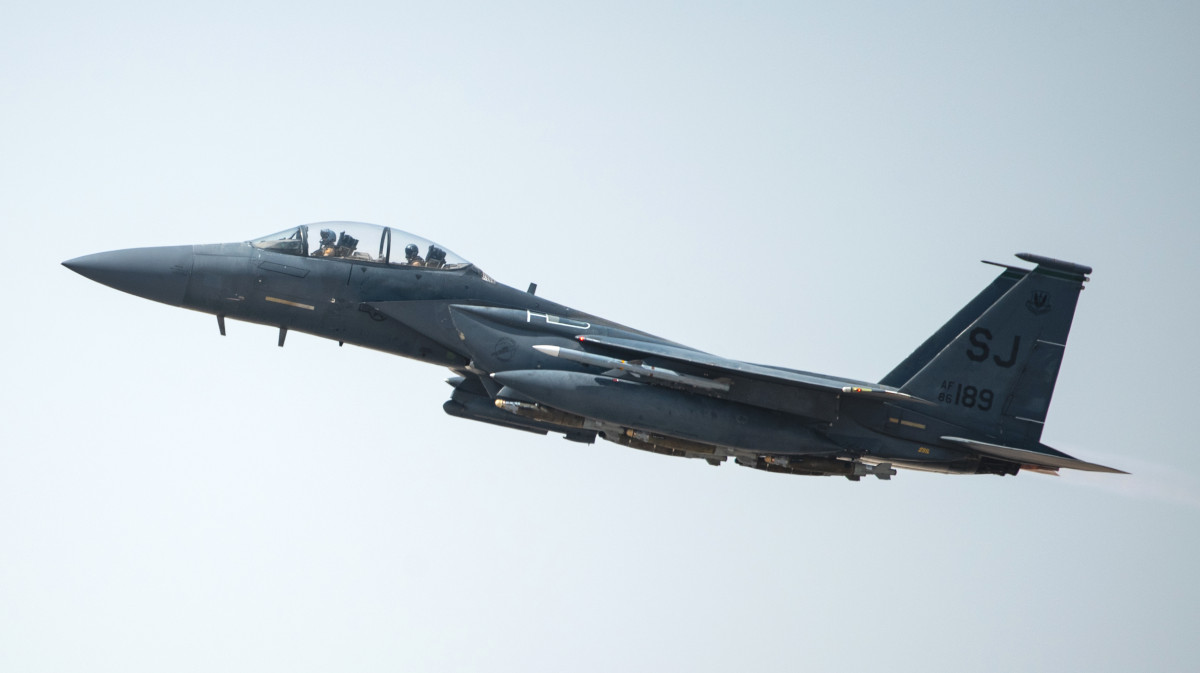
Saudi Arabia has now also formally joined the new U.S.-backed maritime security mission in and around the strategic Strait of Hormuz. Riyadh has also reached out to other partners for support, notably announcing discussions with South Korea about unspecified efforts to improve its air defenses. South Korean defense contractors have been already quietly expanding sales and other cooperation to the Kingdom.
Any responses to the attacks, including military action, may only come after the end of the annual gathering to mark the opening of the latest sessions of the United Nations General Assembly, which officially began yesterday. Trump is scheduled to address to this body on Sept. 24, 2019, and the topics of Iran and Saudi Arabia are almost certain to be major topics of discussion between various national delegations now descending on the United Nations’ headquarters in New York City.
“Iranian officials will never talk to America … this is part of their policy to put pressure on Iran,” Ayatollah Khamenei, had said on Sept. 17, 2019, dismissing the prospect for any negotiations between the two countries in New York. “Their policy of maximum pressure will fail.”
This position may soften depending on whether or not the United States and Saudi Arabia can build significant international consensus regarding Iran’s direct culpability in the recent attacks. That same consensus may also lower the threshold for some form of military response against Iran.
Whatever happens, we have now seen what is likely just the first tranche of evidence surrounding the attacks on Abqaiq and Khurais and more is almost certain to emerge in the coming days or weeks. In the meantime, tensions in the Middle East are escalating yet again and it’s unclear what it may take to avoid a conflict of some kind following this “act of war.”
Contact the author: joe@thedrive.com
